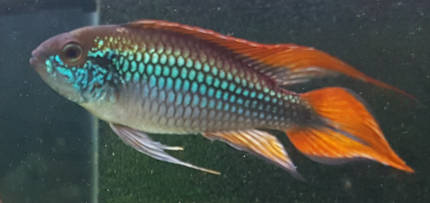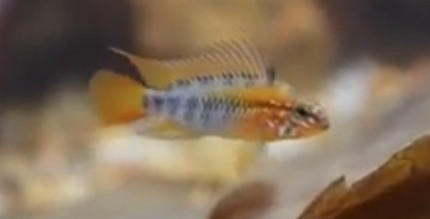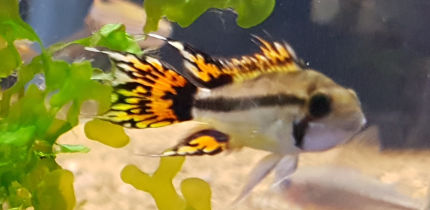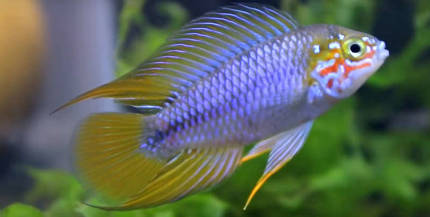Apistogramma Agassizii (also known as the Agassizi's Dwarf Cichlid) have great personalities and are inquisitive fish that show an interest in what is going on around them.
Caring for Apistogramma Agassizii is not difficult and with their stunning and distinctive looks can make them a great addition to community aquariums.
About Apistogramma Agassizii
Apistogramma Agassizii Profile
Origin: Throughout the Amazon basin including parts of north western Brazil and Peru.
Size: Female: up to 2 inches (5 cm), Male: up to 3 inches (7.5 cm).
Minimum tank size: 20 gallons (75 litres).
Tank region: Bottom half of the tank.
Water temperature:72 - 84 °F (22 - 29 °C)
Water conditions: PH between 5 to 7 is desirable. Soft water with a low TDS is preferred. Commercial bred varieties are less fussy.
Difficulty to keep: Beginner to intermediate level
In the wild Apistogramma Agassizii are found in the upper amazon basin in the northwest Amazonas region of Brazil and also in Peru. They have been reported as occupying waters as far east as the Amazon delta.
Agassizii live in slow moving tributaries which are often partly shaded, contain decaying leaf litter and usually have a sandy base.
Fully grown Apistogramma Agassizii males reach a maximum size on 3 inches (7.5cm) while females are smaller only growing up to 2 inches (5cm) in size.>/p>
Behaviour and Personality
Apsitogramma Agassizii are quite inquisitive fish and take an interest in their surroundings. They are generally peaceful but may occasionally chase a fish away if it infringes on their personal space.
Apsitogramma Agassizii generally stay within the bottom half of the water column and often sift the substrate as they look for food left over food from earlier feedings. At feeding time they will accept food from the any region in the water column and even from the surface providing they are not out competed by larger fish.
Apsitogramma Agassizii are a dwarf cichlid and although they are generally peaceful, well manner and suitable for community tanks they can at times become aggressive - most often towards other males or during breeding.
It is not recommended to keep multiple males together in smaller tanks because males like to establish their own territories. Keeping multiple males would require a larger tank (40gal or greater) that is well laid out to provide separate territorial areas.
Our article Apistogramma Aggression And How To Reduce It has more information on signs of aggression and how to manage it.
Apistogramma Agassizii Male vs Female
Males
Male Apistogramma Agassizii are larger and more colourful than their female counterparts. They have a elongated trailing dorsal fin and a distinctive delta tail.
Females
As with other Apistogrammas female Agassizii are smaller and less colourful, usually a dull yellow or brownish colour. They become bright yellow when breeding.
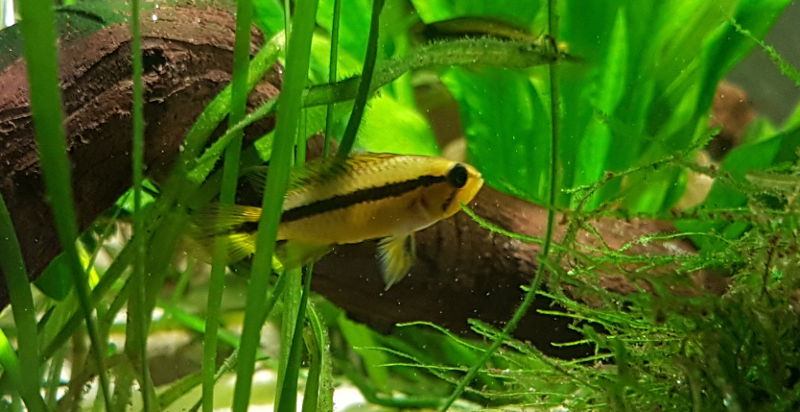
Apistogramma Agassizii Colour Variants
Colour variants of Apistogramma Agassizii have become available in the aquarium hobby. These colour variants come about from selective line breading to enhance the fishes colours.
Apistogramma Agassizii Natural / Blue
The most common natural colour Agassizii seems to be blue and they do have some blue iridescent markings. Considering the wide distribution in the wild different colours depending on the fishes specific origin can be expected.

Apistogramma Agassizii Double Red
A "Double Red" Apistogramma Agassizii refers to the case where the fish has red coloured Dorsal and Caudal fin (tail).
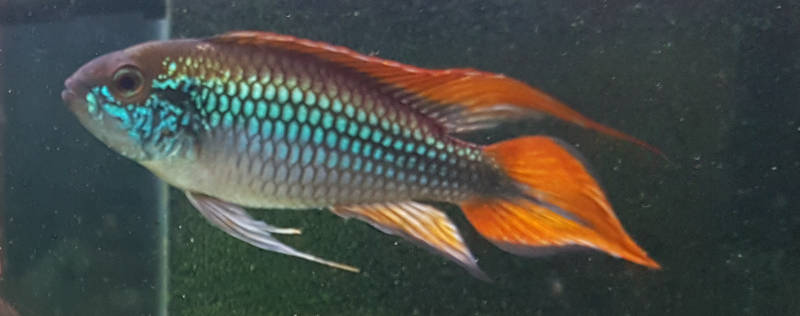
Apistogramma Agassizii Aquarium Setup
Tank Size
Agassizii are one of the larger species of Apistogramma as such a minimum tank size of 20 gallons (75 litres) is recommended. This would also allow for some tank mates, such as a school of tetras. Refer to below tank mates section.
You could keep a trio (1 male + 2 females) in a 20 Gallon (75 litre) tank, however the tank would need to be setup appropriately in order to minimises any possible aggression.
Substrate
For Apistogrammas I would recommend a sand substrate, as apistos enjoy sifting the sand from time to time as they look for food.
In the wild Apistogramma Agassizii are found in shallow tributaries with sandy bottoms. So a sand substrate also mimics their natural habitat.
Aquarium Layout
Agassizii (like all apistos) appreciate some hiding places within the aquarium and objects which break up line of sight. This can be achieved by adding driftwood, rocks and plants to the aquarium.
These breaks in line of sight create separated areas of the tank and provide distinct territories should males get aggressive such as during breeding.
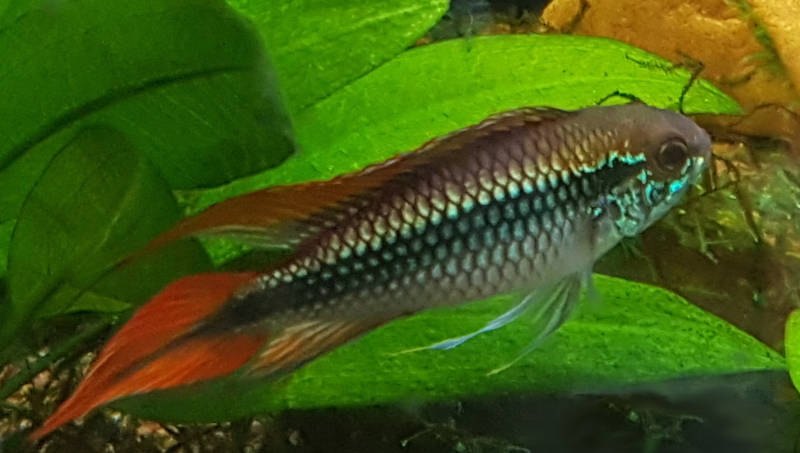
Best Apistogramma Agassizii Tank Mates
Other non aggressive fish are best. Tetras such as Ember Tetras, Loreto Tetras (and many more), as well as Dwarf Pencilfish are generally good choices.
Generally Apistogrammas appreciate some tank mates, even just a small school of tetras to serve as dither fish will help then fell more secure.
For more detail on selecting appropriate Apistogramma tank mates check out or detailed article, Apistogramma Tank Mates.
Breeding Apistogramma Agassizii
Agassizii are not difficult to breed providing you follow some common sense steps such as get mature male and female, setup the tank correctly and maintain the correct water quality.
These points and more are covered in our detailed How To Breed Apistogramma Agassizii, so if you are interested in breeding apistos I highly recommend reading that article too.
Conclusion
Apistogramma Agassizii are a great Apistogramma with wonderful personalities. They are suitable for community aquariums and are available in some different colour varieties.
You may also find our article Apistogramma Dwarf Cichlid - The Ultimate Care Guide useful for further information about keeping Apistogrammas.
